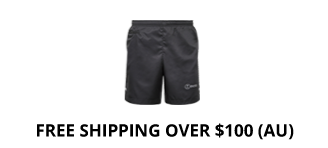When it comes to hitting the trails, ensuring that your Mountain Designs backpack is packed efficiently can make a world of difference in comfort and performance. Whether you’re a seasoned runner or a casual walker, knowing how to optimise your gear can enhance your outdoor experience. Here, we’ll explore ten practical and effective ways to pack your Mountain Designs backpack, ensuring you’re ready for your next adventure while keeping everything organised and accessible.
1. Know Your Gear
Before you even start packing, it’s essential to understand what gear you’ll need for your journey. Take inventory of your essentials—water, snacks, first aid kit, jacket, and any other personal items. Having a clear idea of what you’re bringing helps in planning how to distribute weight effectively throughout your Mountain Designs backpack. This not only aids in comfort but also ensures you have everything you need within reach during your trek.
2. Distribute Weight Wisely
One of the most crucial aspects of packing your backpack is weight distribution. Heavier items should be placed closer to your back and in the centre of your pack. This positioning helps maintain your balance and reduces strain on your body, especially during long hikes. Conversely, lighter items can be stored at the bottom or in external pockets for easy access. By following this strategy, you’ll find that carrying your Mountain Designs backpack feels less cumbersome.
3. Use Compression Straps
Most Mountain Designs backpacks come equipped with compression straps. These straps not only help to secure your load but also allow you to adjust the size of your pack based on how much gear you’re carrying. By tightening these straps, you can minimise the bulk of your backpack, making it easier to navigate through tight trails or crowded areas. Make sure to utilise these straps effectively for a snug and comfortable fit.
4. Keep Hydration Accessible
Staying hydrated while hiking is vital, especially in warmer weather. Be sure to pack your water bottle or hydration bladder in a way that allows for quick access. Many Mountain Designs backpacks feature side pockets specifically designed for water bottles, ensuring that you can grab a drink without having to rummage through your entire pack. Staying on top of your hydration will keep your energy levels up and your spirits high!
5. Organise with Pouches and Bags
Using small pouches or bags for different categories of gear can make a significant difference in how quickly you can find what you need. Consider having one pouch for your first aid supplies, another for snacks, and yet another for electronics like your phone or camera. This method not only keeps your items organised but also prevents your backpack from becoming a chaotic mess, allowing for a more enjoyable hiking experience.
6. Consider the Weather
Packing according to the weather forecast is crucial for a successful hike. If rain is expected, make sure to include a waterproof jacket and pack it in a way that you can access it quickly. Similarly, if it’s going to be chilly, consider layering your clothing. By anticipating weather changes, you can adjust your packing strategy accordingly, ensuring you stay comfortable throughout your journey.
7. Wear Your Heaviest Items
If you have bulky or heavy clothing items, such as a thick jacket or hiking boots, consider wearing them instead of packing them. This approach not only frees up space in your Mountain Designs backpack but also helps balance the weight you’re carrying. Just remember to check the weather and dress accordingly for comfort as you hit the trails.
8. Secure Loose Items
It’s easy to lose small items like keys, maps, or snacks in the depths of your backpack. To prevent this, make sure to secure these items in zippered pockets or compartments. Many Mountain Designs backpacks have designated areas for smaller essentials, helping you keep track of everything and ensuring that you can find what you need when you need it.
9. Adjust After Packing
Once you’ve packed your backpack, take a moment to adjust the straps and fit. Many backpacks, including those from Mountain Designs, are designed to be adjustable for personalised comfort. Make sure the shoulder straps sit comfortably on your shoulders, and the hip belt snugly supports your lower back. Taking a few minutes to adjust your pack can make a significant difference in how it feels during your hike.
10. Practice Packing
Finally, don’t underestimate the value of practice. Before embarking on a longer hike, try packing your Mountain Designs backpack for shorter walks. This practice run allows you to test your packing strategy and make adjustments as needed. Over time, you’ll discover what works best for you, making your outdoor adventures more enjoyable and hassle-free.
FAQs about Packing Your Mountain Designs Backpack
1. What should I pack in my Mountain Designs backpack for a day hike?
For a day hike, consider packing water, snacks, a first aid kit, a lightweight jacket, a map or GPS device, and any personal items you may need. It’s essential to keep the weight manageable while ensuring you have all the necessary gear.
2. How can I prevent my backpack from bouncing while I run?
To prevent bouncing, ensure that your backpack is properly fitted and that you distribute weight evenly. Utilise compression straps to secure your load and keep heavier items close to your back.
3. Is it better to pack a hydration bladder or water bottles?
Both options have their merits. A hydration bladder allows for easier sipping while on the go, while water bottles can be more accessible for quick hydration stops. Choose based on your personal preference and the length of your hike.
4. How do I clean my Mountain Designs backpack after a hike?
To clean your backpack, empty it and shake out any debris. Use a damp cloth or sponge with mild soap to wipe down the exterior and interior. Allow it to air dry completely before storing it.









